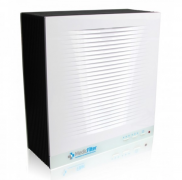Breathe Easy in Beijing: Resources to Monitor and Handle the Haze Days

The air quality in Beijing has been steadily improving over the past several years, with the Chinese government who once denied the problem, now offering forecasts and even closing schools on heavily polluted days. Premier Li Keqiang stated the mission to “declare war” on pollution in his 2014 address to the National People’s Congress, and it appears the government is winning the war. The changes made to reduce air pollution and hazardous particulate matter, PM2.5 in particular, hasn’t come without certain consequences, but the overall trend is certainly welcomed by most.
Another issue to keep in mind is sandstorms. This is somewhat less common these days thanks to the Great Green Wall, but they continue to be a concern simply due to Beijing’s proximity to the Tianmo Desert and the deserts of Inner Mongolia. In late March of this year, such a sandstorm hit the city and the air quality quickly soared to hazardous levels.
Below are some resources to help you monitor and handle such hazy days, whatever the cause may be.
Apps

Not all apps are equal. Depending on where they are located and who is running them, they will adhere to different standards. These two apps offer the ability to choose the standard you deem most valid and based on those numerics will provide you with updates. U.S. Environmental Protection Agency and World Health Organization standards are widely considered to be the most stringent.
iOS – Air Matters
Android – World Air Quality Index
Websites

AQICN.org – The World Air Quality Index is a social enterprise project that began as a hobby in 2007 by two French entrepreneurs living in China. It adheres to US-EPA standards set in 2016.
Earth Wind Map – This website offers an interactive live map of the world that shows air flow at different levels of atmosphere. You may choose to view particulate matter, air temperature, wind speed, and other such related metrics.
Masks

There are two very important details about respirators to keep in mind as you decide what is best for your needs — they need to have a tight seal on your face so that they force the air through the filters, and the filters need to be rated for PM2.5.
Respro – This is a British company, and masks will need to be ordered online and shipped.
AQBlue – These masks are available in retail stores in and around Beijing.
Air Filters/Purifiers

As with masks, what is important is the filter and it’s ability to remove fine particulate matter from the air. Replacing filters is necessary and somewhat costly, but the benefit is clear. These options do just that.
Mi Air Purifier – The Xiao Mi brand has grown to be one of the strongest and most well-known Chinese brands, and their air purifiers offer apps for your phone that help you monitor the air and the life of the filter.
Medic Filter 100 – The Renaud brand is another company started by a concerned foreigner living in China as a response to his young son’s respiratory troubles. It has grown to offer many other products, from BBQ grills to water filters.
Have you been surprised by the air quality in China? Is it better or worse than you expected? Let us know what resources you use, and if these are helpful. Also, take a look at the quality of air in your home city/country, you may be surprised to see it isn’t quite as good as you thought!